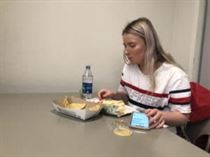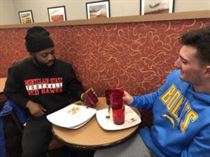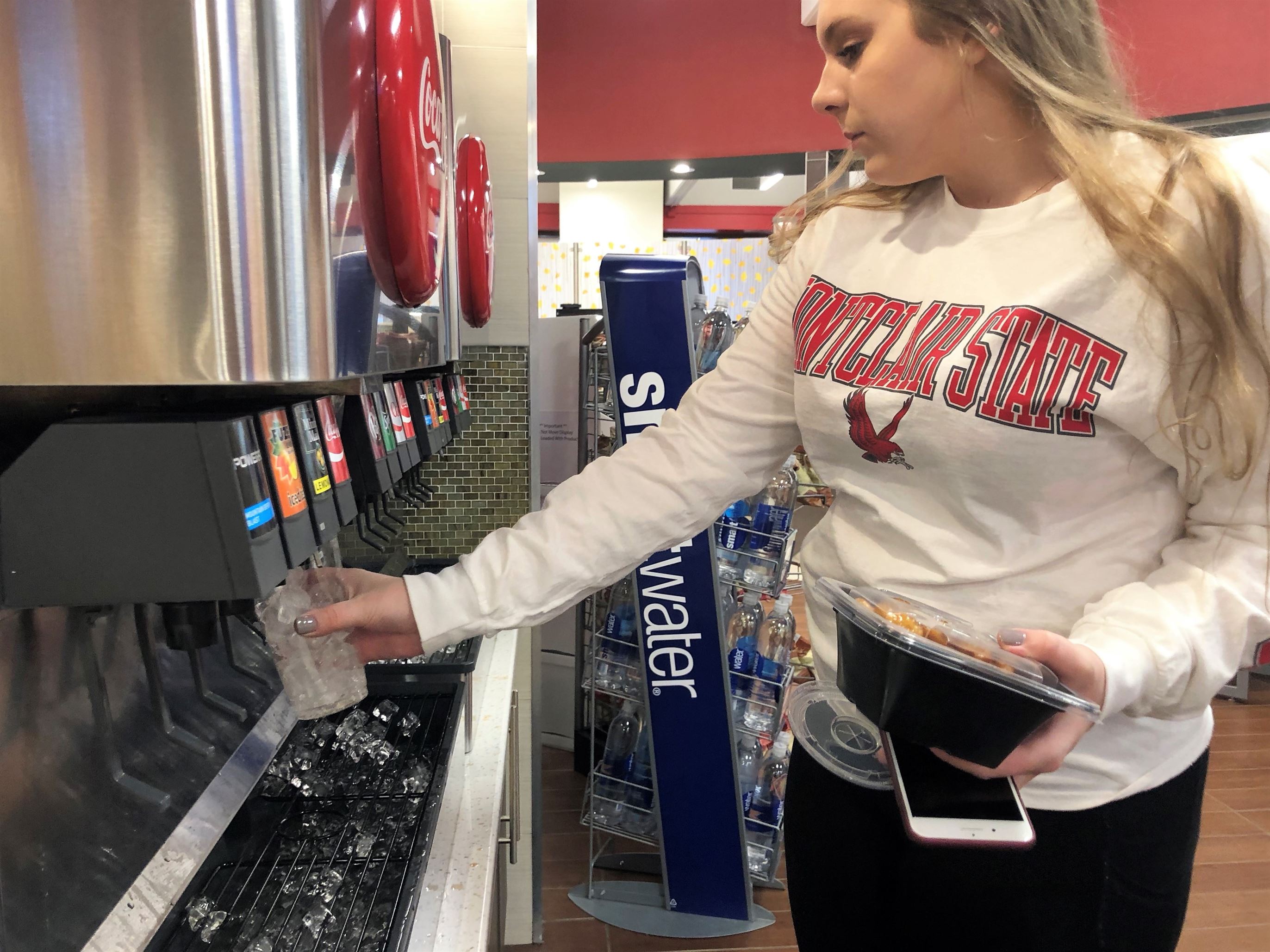It’s that time in the semester where classes are getting difficult and affording food on campus is getting even harder. A swipe here, a swipe there and before students know it, they’re only halfway through the semester with a few dollars left in their Flex account.
Balancing out Flex Dollar spending seems to be a constant struggle for a multitude of students on Montclair State’s campus. Many of them find themselves spending a majority of their Flex Dollars within the first few months of the school year. By the time they realize they’ve run out, they either consider adding more money to their accounts or find ways to save money on campus.
As freshman journalism major Sydnie Hoelz bought lunch with her scarce amount of Flex Dollars, she discussed the frequency of her spending.
“I use my Flex [Dollars] probably six out of seven days of the week,” Hoelz said.
In comparison to her first semester at Montclair State, she tried her best to make a strategic plan for her spending in her second semester.
With no anticipation to spend her Flex Dollars as fast as she did, Hoelz is hitting that mid-semester bump in the road where she and other students alike realize just how much they’re really spending.
Freshman psychology major Jessa Cook admitted that she also spent her Flex Dollars too frequently because the food’s better where they’re available for currency.

Freshman psychology major Jessa Cook enjoys her California Tortilla meal in the Student Center Cafe.
Emma Richter | The Montclarion
Cook, like many other students prefer dining options on campus that take Flex Dollars as opposed to meal swipes at resident dining halls.
“I think I was more aware [of my Flex Dollar balance] last semester, and now I just eat with my Flex Dollars all the time,” Cook said.
Food options including Au Bon Pain, Dunkin’ Donuts, Chili’s, Which Wich, the Red Hawk Diner, Bistro, 2Mato, Chopped and the Student Center Cafe all accept Flex Dollars. The two dining halls, Sam’s Place and Freeman Hall, are the only options that don’t accept this form of currency.
Manager of dining services James Robinson provided specific insight on Flex Dollar spending while overlooking dining activities on campus.
“Typically, we find customers will use Flex Dollars for food purchases below seven dollars, or for a vending machine purchase, or for that [Dunkin’ Donuts] cup of coffee and donuts as examples,” Robinson said.
Being that Flex Dollars are a popularly used currency on campus, it provides convenience for students to purchase not just food, but personal necessities such as books, clothes and even toiletries. All spending options aside, food purchases still continue to be the main reason for the rise of sudden droughts in students accounts.

Sophomore jazz studies major Vito Cakaroglu wraps up with his meal at Chili’s in the Blanton Plaza.
Emma Richter | The Montclarion
Sophomore jazz studies major Vito Cakaroglu weighed in on his own Flex Dollar spending patterns, with dining hall hours seemingly playing a factor.
“I would say I use Flex [Dollars] a decent amount, especially considering that I dorm at Montclair [State],” Cakaroglu said. “The dining halls aren’t open at more reasonable times, so you end up using your Flex [Dollars] more often.”
Like other students, Cakaroglu has made a plan to just be more aware of how much he’s spending and where he’s spending it.
Flex Dollar allotment can vary based on a student’s preferred meal plan. Amounts can range from $250 all the way up to $500 Flex Dollars for the year to spend as wanted.
As junior health and physical education major Kyle Phipps and sophomore paralegal studies major Donato Casolaro wrap up their meal at Sam’s Place, they share their thoughts on Flex Dollars.
Phipps keeps track of his Flex Dollar balance simply because he has no choice.
“Yes, I’m aware [of my balance], because I’m running out of Flex Dollars right now,” Phipps said. “I’m at $5 right now, [and] I’m struggling.”

Junior health and physical education major Kyle Phipps (left) and sophomore paralegal studies major Donato Casolaro (right) enjoy a meal at Sam’s Place.
Emma Richter | The Montclarion
Casolaro shared his own advice for deciding when and where to spend Flex Dollars.
“I would just not use all of your Flex [Dollars] at the beginning [of the semester],” Casolaro said.
Spending Flex Dollars is fun and enjoyable until they become scarce and limited. The best thing to keep in mind is that no one is “flexing too hard” on their own; it’s a campuswide epidemic.



